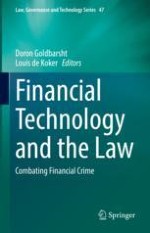2022 | OriginalPaper | Buchkapitel
Centralised Control Over Decentralised Structures: AML and CTF Regulation of Blockchains and Distributed Ledgers
verfasst von : Dianna L. Kyles
Erschienen in: Financial Technology and the Law
Aktivieren Sie unsere intelligente Suche, um passende Fachinhalte oder Patente zu finden.
Wählen Sie Textabschnitte aus um mit Künstlicher Intelligenz passenden Patente zu finden. powered by
Markieren Sie Textabschnitte, um KI-gestützt weitere passende Inhalte zu finden. powered by
